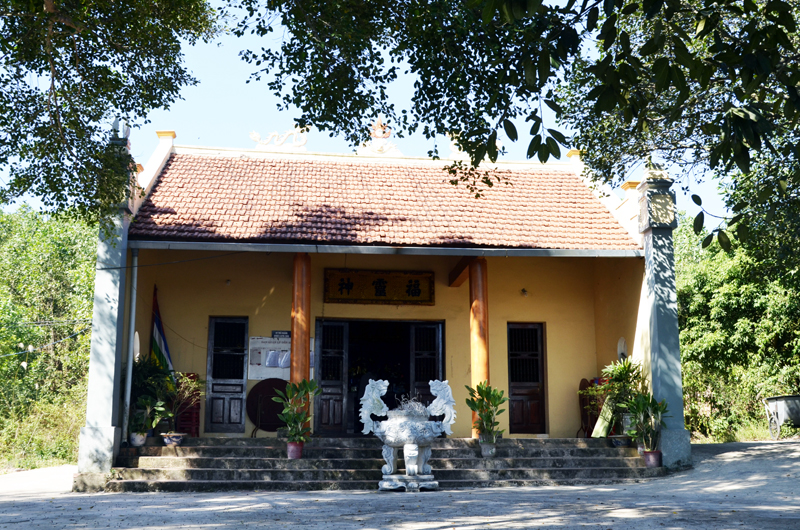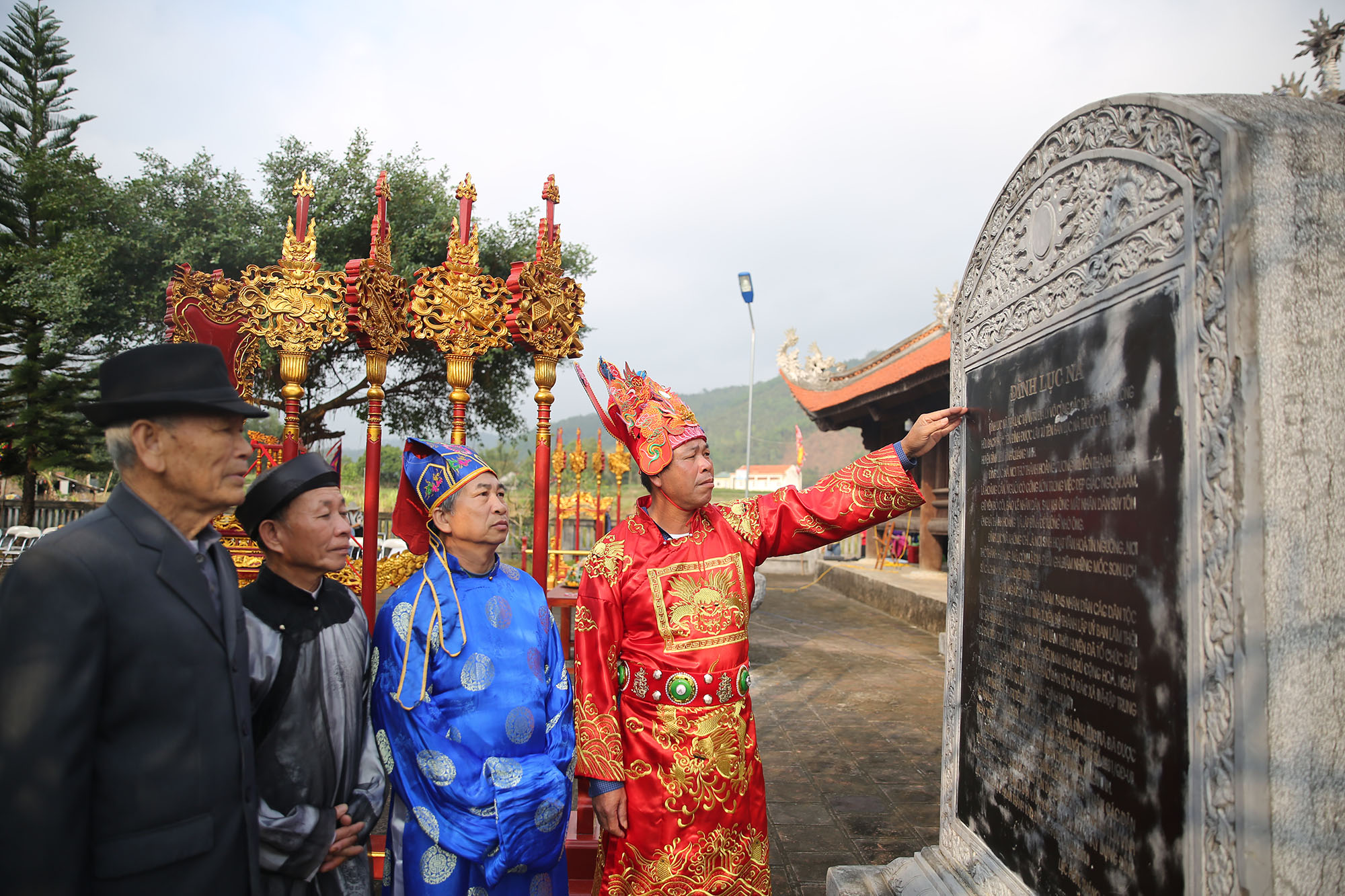The Temple of Đức Ông Hoàng Cần (Miếu Đại Vương): A Symbol of History and Heritage
Last Updated on 1 January, 2025 by admin
Nestled in 89C2+HR2, ĐT330, Hải Lạng, Tiên Yên, Quảng Ninh, Việt Nam, the Temple of Đức Ông Hoàng Cần, also known as Miếu Đại Vương, stands as a significant cultural and historical monument. This sacred site honours Đức Ông Hoàng Cần, a heroic general who valiantly defended his homeland and its people during Vietnam’s feudal era.
The temple is not only a testament to patriotism and bravery but also a spiritual haven and historical treasure, drawing visitors and locals alike to pay tribute and explore its storied past.

Historical Significance
The temple is steeped in history and folklore, offering a glimpse into the life and legacy of Đức Ông Hoàng Cần.
- Origin and Legends:
Local legends narrate the inspiring tale of Đức Ông Hoàng Cần—a skilled strategist and protector of the land who became a revered guardian spirit. His courageous deeds and selfless sacrifices are still celebrated, ensuring his enduring presence in the hearts of the community. - Construction and Evolution:
Built during the feudal period, the temple has undergone several restorations and expansions while preserving its original essence. It has served as a cultural and spiritual hub for the community, offering solace and inspiration through generations. - Cultural and Spiritual Significance:
The temple is a sanctuary where people honour the memory of a national hero while participating in traditional rituals that reflect gratitude, hope, and reverence for the past.
Architectural and Scenic Features
The temple’s architecture and surroundings create an awe-inspiring blend of artistic mastery and natural beauty.
Distinctive Architecture:
Designed in the traditional Vietnamese style, the temple features curved tiled roofs, intricately carved wooden beams, and ornate dragon and phoenix motifs. Each element is a testament to the artistry and craftsmanship of the time.
Layout and Design:
The central hall, dedicated to Đức Ông, exudes grandeur and solemnity. Surrounding structures include smaller shrines devoted to related deities and heroes, with an open courtyard shaded by ancient trees that enhance the serene atmosphere.
Picturesque Surroundings:
Set amidst tranquil nature, the temple is often surrounded by mountains, a nearby lake, or lush greenery, providing visitors with a peaceful retreat to reflect and connect with history.
Key Activities and Experiences at the Temple of Đức Ông Hoàng Cần
The Temple of Đức Ông Hoàng Cần offers a wealth of meaningful activities, each designed to immerse visitors in its historical, cultural, and spiritual essence. My visit to the temple left me with unforgettable memories and deeper insights into its significance.
Traditional Ceremonies: A Glimpse into Local Rituals
The temple comes alive during significant ceremonies, especially during the New Year and commemorative events for Đức Ông. I was fortunate to witness a New Year ritual, where offerings of fruits, incense, and beautifully arranged flowers were presented to honour the revered hero. The rhythmic beat of traditional drums and the harmonious chanting of prayers created an atmosphere of reverence and unity. Being part of this sacred event, even as an observer, was deeply moving. I joined in lighting incense sticks, silently expressing my gratitude and admiration for the community’s rich heritage.
Exploration and Learning: Unveiling the Temple’s History
As I wandered through the temple grounds, each corner seemed to tell a story. Intricately carved stone steles narrated heroic tales of Đức Ông, while poetic inscriptions on wooden panels spoke of the temple’s spiritual and cultural legacy. A local guide generously shared anecdotes about the temple’s construction and its role in safeguarding the community during tumultuous times. This personalised storytelling brought history to life for me, transforming what could have been a simple visit into an enriching journey through the past. One highlight was discovering a hidden inscription that depicted a long-forgotten legend, which the guide explained with great passion and detail.
Cultural Connections: Beyond the Temple
The temple isn’t just a place of worship; it’s a starting point for broader exploration. After my visit, I ventured to nearby landmarks, including a serene lake and a historical pagoda that locals recommended. The connections between these sites and the temple’s history painted a larger picture of the region’s spiritual and cultural tapestry. While enjoying the surrounding scenery, I struck up conversations with other visitors and locals, who shared their own interpretations of the temple’s significance. This sense of camaraderie added a warm, communal layer to my experience.
A Personal Takeaway
Engaging in these activities made my visit to the Temple of Đức Ông Hoàng Cần truly unforgettable. The traditional ceremonies offered me a glimpse into the spiritual heart of the community, while exploring the artefacts and stories deepened my understanding of its historical importance. The cultural connections I forged extended the temple’s impact beyond its physical boundaries, leaving me with a profound appreciation for the resilience and unity of the people who uphold its legacy. For anyone seeking a meaningful and immersive experience, this temple is a destination that promises both reflection and discovery.
Cultural and Social Importance
The temple plays an integral role in preserving and promoting Vietnam’s cultural heritage.
Preservation of Cultural Values:
By safeguarding historical relics and hosting cultural events, the temple ensures that the legacy of Đức Ông Hoàng Cần remains vibrant and relevant for future generations.
Boosting Local Tourism:
As a prominent cultural and spiritual site, the temple attracts tourists and researchers, contributing to the growth of the local economy and fostering pride among residents.
Fostering Community Unity:
The temple acts as a communal gathering place, strengthening bonds through shared traditions and collective celebration.
Tips for Visiting the Temple
Visiting the Temple of Đức Ông Hoàng Cần can be a deeply enriching experience if approached with thoughtfulness and preparation. Here are some practical tips, enhanced by my own personal experiences, to help you make the most of your visit.
Timing Your Visit
Choosing the right time to visit can greatly influence your experience. I visited during one of the temple’s major festivals, and the vibrant energy of the place was absolutely captivating. The air was filled with the sound of ceremonial music, the scent of incense, and the sight of worshippers offering their prayers with heartfelt devotion. Watching the traditional rituals and colourful processions provided me with a profound insight into the cultural significance of the temple. However, if you prefer a quieter, more introspective experience, visiting on a regular day offers the serenity and tranquillity of the temple’s natural surroundings. On one such calm morning, I spent hours exploring the grounds in peaceful reflection, appreciating the intricate details of the architecture without the distraction of crowds.
Dress and Conduct
Respecting the sanctity of the temple is essential. I made sure to wear modest attire—a long-sleeved top and trousers—to blend into the spiritual atmosphere. This choice not only demonstrated respect for local customs but also allowed me to feel more connected to the experience. During one of the ceremonies, I observed the reverent silence of worshippers and instinctively followed suit, which helped me fully immerse myself in the moment. A simple smile and polite bow when interacting with temple caretakers or locals also went a long way in creating meaningful connections.
Preserving the Environment
The temple is not just a historical and spiritual site—it’s also a symbol of communal pride. I made it a point to leave no trace of my visit, ensuring that the pristine beauty of the temple was preserved for others to enjoy. While admiring the ornate carvings and ancient artefacts, I refrained from touching them, knowing that even the slightest mishandling could cause wear over time. I also carried a small reusable bag for any trash, as I noticed bins were scarce in some areas. During my visit, a local elder shared how much they appreciated visitors who respected the temple’s sacredness and cleanliness—a sentiment that stayed with me long after I left.
A Personal Takeaway
Following these tips not only enhanced my experience at the Temple of Đức Ông Hoàng Cần but also deepened my appreciation for the cultural and spiritual values it represents. By visiting with mindfulness and respect, I felt more connected to the history and significance of this sacred place. Whether you come during a bustling festival or a quiet day, the temple offers a unique opportunity to step into a realm of tradition, reverence, and timeless beauty.
Conclusion
The Temple of Đức Ông Hoàng Cần (Miếu Đại Vương) is a beacon of Vietnam’s rich historical, cultural, and spiritual heritage. Its enduring legacy pays tribute to a heroic figure while serving as a source of inspiration and reflection for all who visit.
Whether you come to immerse yourself in history, seek spiritual solace, or simply admire the serene beauty of the site, this remarkable temple offers an experience that resonates long after you leave. Make time to explore this cherished landmark and discover the stories and values that continue to shape the heart of the region.




